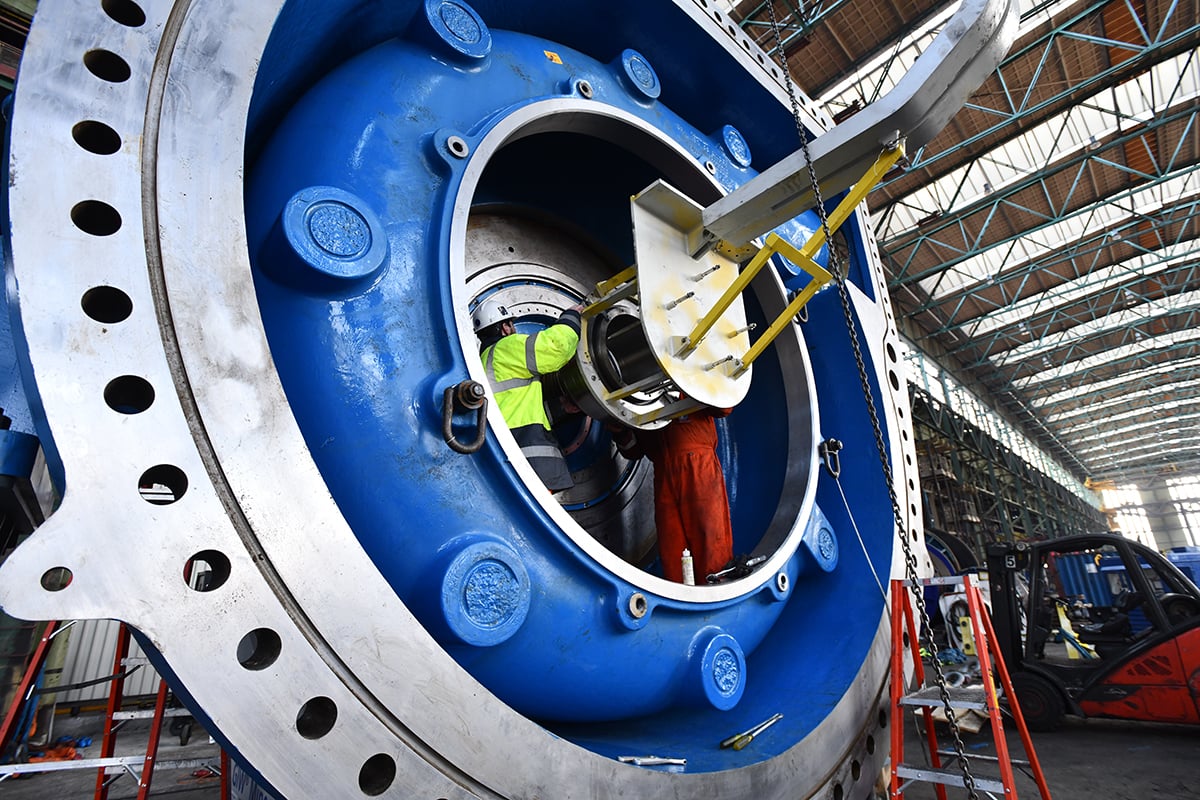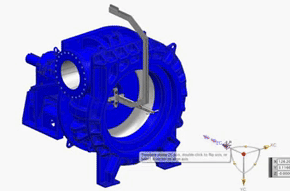
While KSB GIW, Inc.'s pumps help our customers succeed every day, some materials can break down over time — either from misuse or from contact with abrasive or corrosive materials. One customer recently experienced a leak that resulted from a worn shaft sleeve. Here’s how the problem was resolved, as well as some recommended ways for customers to avoid shaft sleeve problems in the future.
The issue
Shaft sleeves are cylindrical metal tubes designed to protect pump shafts from erosion, corrosion, and wear at critical points, such as at the stuffing box. The shaft sleeve is a wear component, like brake pads on a car, and is designed to be more time- and cost-efficient to replace than the shaft itself (like the entire braking system).
The customer in question discovered during an inspection that dirty seal water had cut their shaft sleeve in half, causing a leak. As a temporary measure, the millwright tightened the sleeve and moved it inward; however, this caused a secondary wear pattern and did not stop the leak. A second tightening prevented the sleeve from rotating and caused a horizontal wear pattern in one location. By this point, the customer should have realized that the sleeve was beyond repair. If wear patterns have already formed on the shaft sleeve, moving it will only worsen the wear and cause new wear patterns to form in the area relative to its original cause.
To better understand this, think of slurry and contaminated sealing water like liquid sand paper. Both can be highly corrosive and abrasive. Moving the shaft sleeve will only relocate the groove and initiate the generation of another one. Tightening the gland compresses the packing and reduces the cooling effect of the sealing water; over-tightening it will make matters worse and can lead to component failure.
 The solution
The solution
To prevent failure from occurring, you can take a few steps to diagnose and solve problems with the shaft sleeve before it wears out. Make this diagnosis a part of your routine pump maintenance in order to avoid early sleeve replacement.
The first step is to inspect the sealing water system for adequate flow, pressure, and quality. KSB GIW, Inc. recommends clean sealing water at a sustained pressure of 10 PSI above the discharge pressure of the pump. The higher-pressure sealing water will prevent the pumped medium from weeping back into the stuffing box, thereby mitigating shaft sleeve wear. If the flow and pressure are within specifications, check the sealing water for corrosive properties and/or abrasive particulates. The shaft sealing system must be designed and applied according to the parameters for the pump.
If you have inspected the system and found that the shaft sleeve is worn beyond repair or leaking, it may be time to replace it. Fortunately, shaft sleeves are designed to be more time- and cost-efficient to replace than the entire shaft, making replacement a “no brainer” as far as cost and repair time are concerned. Shaft sleeves are available in different materials to combat all combinations of wear and corrosion.
How KSB GIW, Inc. can help
As part of the KSB GIW, Inc. catalog of pumps and pump parts, we offer over 15 different shaft sleeve material options, available for an array of industrial applications. Our shaft sleeve materials are designed for use in corrosive as well as erosive environments. When paired with the correct stuffing box assembly, our shaft sealing arrangements are designed to tackle even the most challenging pumping applications. We also offer two types of sleeves: the Conventional Type, which is used in combination with an Impeller Release Ring assembly; and the Hook Type, which is not.
All of our shaft sleeves, as well as most of our other products, are available in multiple material options. It’s critical that the correct materials be selected for all products in order to meet customers’ ever-changing pumping needs. One such material is the nickel-chromium coated 0SFWS, which has been chosen as our standard shaft sleeve offering due to its success in a wide range of applications and its cost effectiveness.
If your shaft sleeve is worn to the point of leakage, you should consider replacing it. While replacing the sleeve is easier and less expensive than replacing the entire shaft, the process can interfere with and slow down your overall production. Therefore, it’s important to exercise best maintenance practices to extend the life of your shaft sleeve. You can do this by understanding what contributes to shaft wear and knowing the specifications of your particular pump related to flow, pressure, and sealing water. Finally, if your shaft sleeve is leaking, contact KSB GIW, Inc. about a replacement before the leak damages the rest of the shaft.
